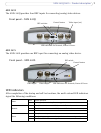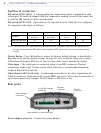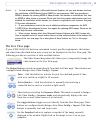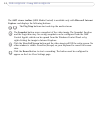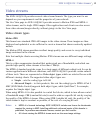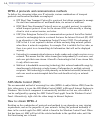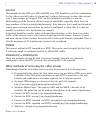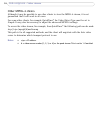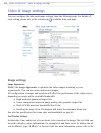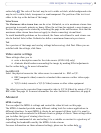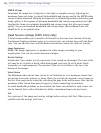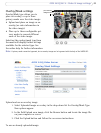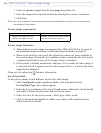
15
AXIS 241Q/241S - Video streams
RTP+RTSP
This method (actually RTP over UDP and RTSP over TCP) should be your first consideration
for live video, especially when it is important to always have an up-to-date video stream,
even if some images get dropped. This can be configured as multicast or unicast.
Multicasting provides the most effic
ient usage of bandwidth, especially when there are
large numbers of clients viewing simultaneously. Note however, that a multicast broadcast
cannot pass a network router unless the router is configured to allow this. It is thus not
possible to multicast over the Internet for example.
Unicasting should be used for video-on-demand b
roadcasting, so that there is no video
traffic on the network until a client connects and requests the stream. However, if more
and more unicast clients connect, the server will at some point become overloaded. There is
also the maximum of 20 simultaneous viewers to be considered.
RTP/RTSP
This unicast method is RTP tunneled over RTSP. This can be us
ed to exploit the fact that it
is relatively simple to configure firewalls to allow RTSP traffic.
RTP/RTSP/HTTP or RTP/RTSP/HTTPS
These two methods can also be used to traverse firewall
s. Firewalls are commonly
configured to allow the HTTP protocol, thus allowing RTP to be tunneled.
Other methods of accessing the video stream
Video/images from the Axis video server can also be accessed in the following ways:
• If supported by the client, the Axis video server can use Motion JPEG server push
to
display video. This option maintains an open HTTP connection to the web
browser and sends data as and when required, for as long as required.
• As single JPEG images in a browser
. Enter the path, for example:
http://<ip>/axis-cgi/jpg/image.cgi?resolution=CIF
• Windows Media Player. This requires AMC and the MPEG-4 decoder
to be
installed. The paths that can be used are listed below, in the order of preference.
• Unicast via RTP: axrtpu://<ip>/mpeg4/medi
a.amp
• Unicast via RTSP: axrtsp://<ip>/mpeg4/media.amp
• Unicast via RTSP, tunneled via HTTP: axrtsphttp://<ip>/mpeg4/media.amp
• Unicast via RTSP, tunneled via HTTPS: axrtsphttps://<ip>/mpeg4/media.amp
• Multicast: axrtpm://<ip>/mpeg4/media.amp
Notes:
<ip> = IP address.



